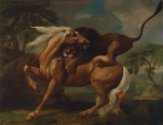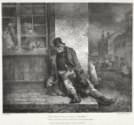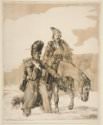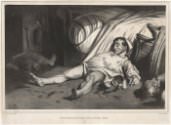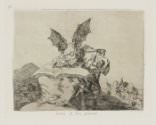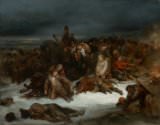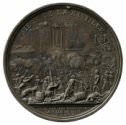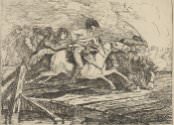A Lion Attacking a Horse
A Lion Attacking a Horse
George Stubbs’s scene of a lion attacking a horse can be read as an allegory of highly charged human interactions. This is the first of sixteen paintings by the artist, including the Yale University Art Gallery’s version, to represent this theme. Stubbs often painted domestic animals, but in expanding his practice in 1762 to depict wild animals, he became a leader in “sublime” themes in art. According to the contemporary philosopher Edmund Burke, the beautiful was calming, but the sublime—which was defined as a terrifying or disturbing event, contemplated from a safe distance or within the controlled confines of art—inspired the more potent emotion of excitement stoked by terror. The sublime, Burke argued, “comes upon us in the gloomy forest, and in the howling wilderness, in the form of the lion, the tiger, the panther, or the rhinoceros.” Stubbs’s confrontations between wild animals inspired later Romantic artists such as Eugène Delacroix and Théodore Géricault to depict similar scenes.
